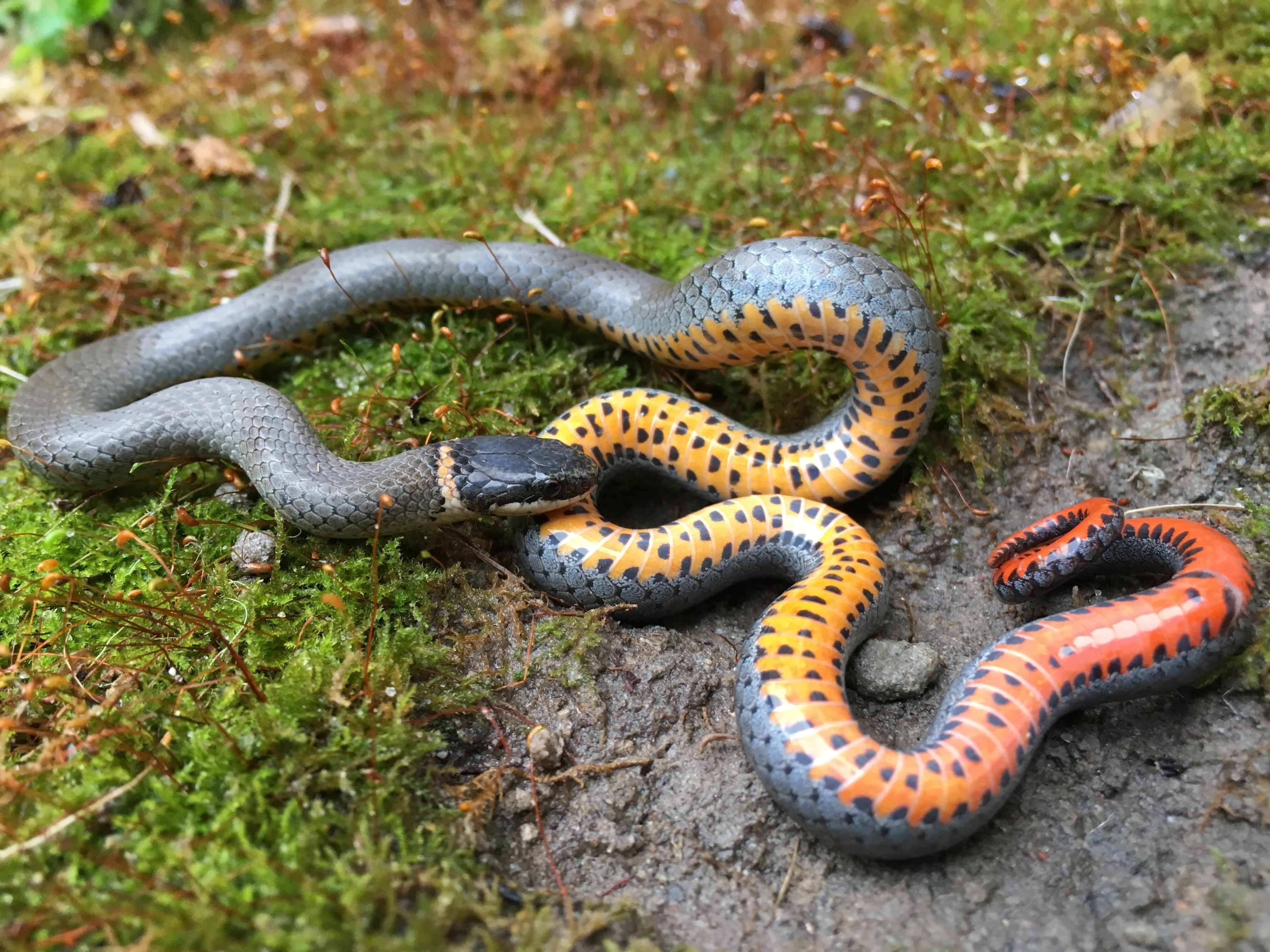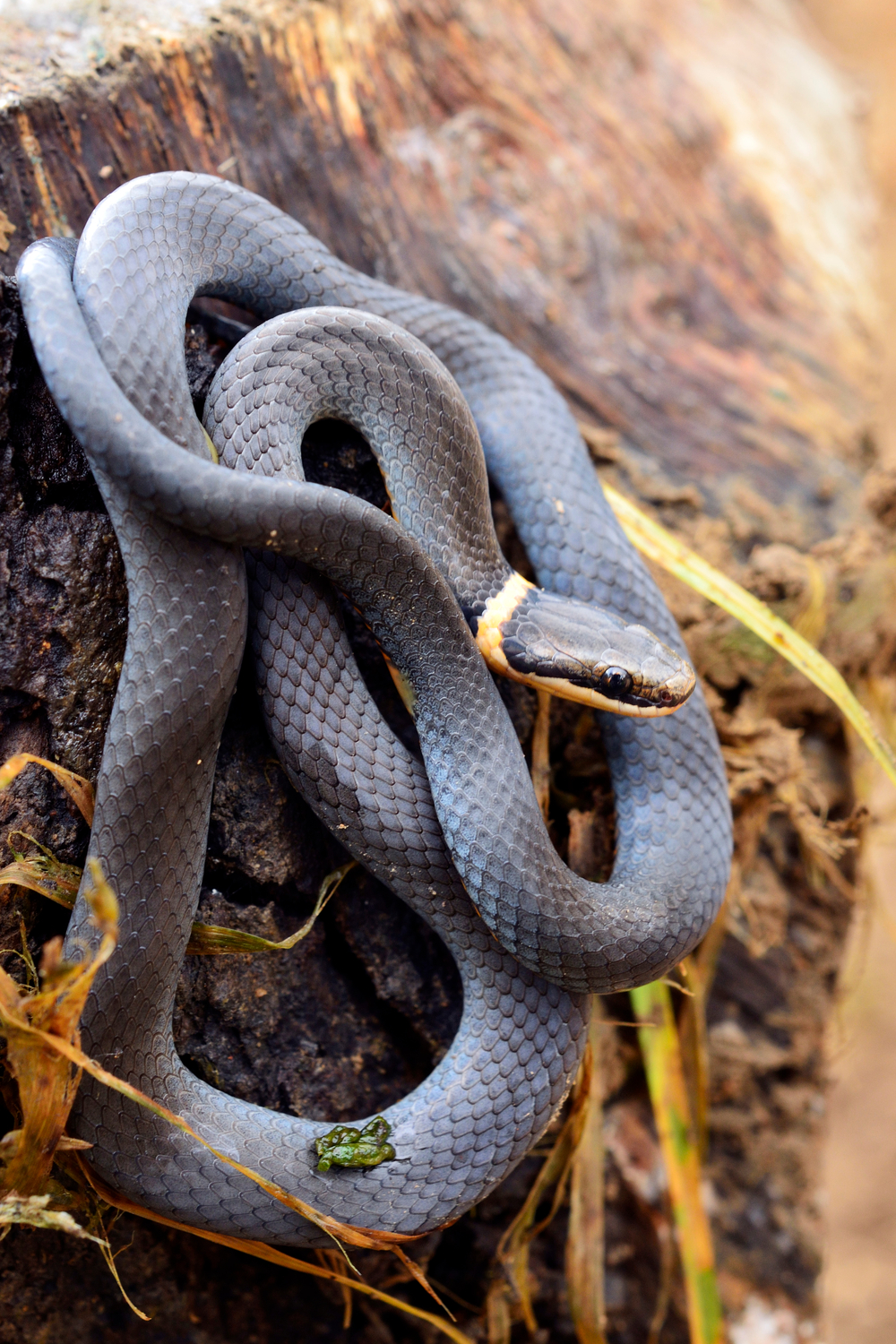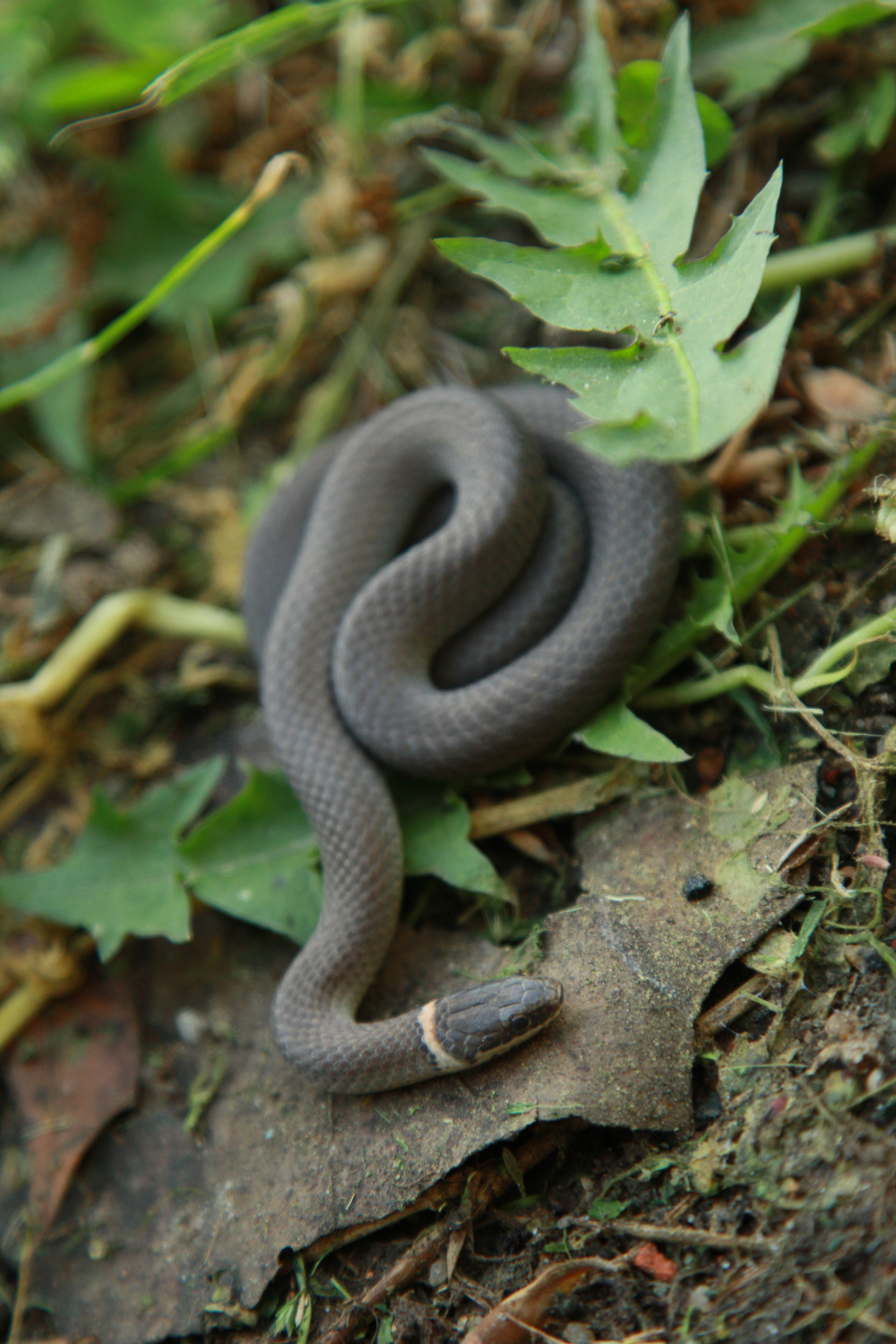Ringneck snakes are the most widespread snake species in North America. You can see them in various regions, from Canada in the north to Florida in the south. There are several types of this animal, and you can easily differentiate them based on their slender appearance.
People are often curious as to what do ringneck snakes eat. In this article, we will review some of its common habits and will share fun facts about this tinny reptile.
Ringneck Snakes Habits and biology
These snakes have olive, blue-gray, brown, or black backsides. They will also have a few yellow, yellow-orange, or red rings, which is how they got their name. However, it is worth mentioning that some of the species don’t have these characteristic bands. Some individuals might have partially colored rings, which makes it harder to recognize them.
Like with color, there might be some size differences between subspecies. An average ringneck snake will be between 10 to 15 inches long. The only difference is D. p. regalis, which can grow up to 18 inches. Baby snakes will be 8 inches long, and as they grow older, they will get 1 to 2 inches every year. The speed of their development usually depends on available nutrients.
The species have between 15 to 17 scale rows that cover their midsection. They feel very smooth on the touch. You can recognize males as they have scale tubercules. While females have shorter tails than male snakes, they are longer.
Here are the main habits that ringneck snakes exhibit:
- Like many other snake species, this is a rather timid animal. They usually seek cover under rocks, logs, debris, and underground. They are active during the night, but you can sometimes see them durign the day.
- According to biologists, this is the most common snake species in the North. In certain states, like Kansas, you can find between 700 to 1,800 ringneck snakes per hectare. Given their enormous numbers, scientists believe that the species is crucial for the US ecosystem. Not only are they important prey for many species, but they also regulate the population of numerous animals.
- Although the species is poisonous, the toxin is harmless to humans. Nevertheless, they use it when hunting smaller animals such as other small snakes, lizards, earthworms, and amphibians.
- These animals give birth during early summer. On average, a female snake will lay 4 to 5 eggs. Young snakes look the same as adults.
What do ringneck snakes eat in the wild?
This is a carnivorous species, and its prey depends on the specific environment where they live. Given they are so widespread in the US, subspecies’ diets can be completely different.
As the snake has such a weak venom, it relies heavily on its grip to kill. Unlike most other cousins, they don’t have the normal venomous gland. Instead, they rely on Duvernoy’s gland, a homolog of elapids’ and vipers’ glands.
Another thing characteristic of this animal is the teeth layout. Ringneck snakes have fangs in the back. The only exception is D. p. edwardsii, which doesn’t have fangs whatsoever. During the hunt, the animal will produce venom from its Duvernoy’s gland and send it to the maxillary tooth.
The species will first constrict its victim. Then, when it gets a firm hold, it will puncture the prey’s skin and start pouring venom into its tissue.
Biologists claim that this toxin is only for offense, and it doesn’t have a defensive purpose as it is harmless to larger animals. Instead, when the animal defends itself, it coils on the ground, thus exposing its bright belly so that larger animals think that the snake is poisonous and should be eaten.
Here are the things that ringneck snakes eat:
- Lizards (especially salamanders)
- Earthworms
- Slugs
- Frogs
- Small and juvenile snakes
An adult animal needs one bottle of water a day, and it can feed every few days. In extreme cases, they can survive without eating for two weeks. They require proteins and calcium. Like other reptiles, the species get vitamin D by sunbathing. However, they cannot stand too much sun, so they usually go out when it’s moderate temperature.
In some extreme situations, the species can turn cannibalistic. This is mainly for feeding purposes, and it doesn’t have to do with domination.
Facts about ringneck snakes
This species has some very interesting traits. Here are some fun facts about ringneck snakes:
- These snakes tend to hide from humans but are social creatures. They are generally timid and will avoid anything larger than them. However, if you confine two snakes to the same space, they will likely fight with each other for resources. Often, this can lead to cannibalism. At the same time, they can also live in large groups of 100 and more. That way, they can protect themselves from potential predators.
- The animal usually lives in damp, tropical environments. You can find them near rivers and in swamps. Experts classify them as semi-aquatic species. They are especially common in areas with humidity levels from 50 to 80% and where the average temperature is between 70 to 75 degrees Fahrenheit.
- Most of the subspecies will mate during early spring. However, some of them will do some during the fall. When they want to mate, females start excreting pheromones present in their skin. When the male finds the female, it will start courtship by rubbing its closed jaw alongside her body. After that, he will bite her ring and place himself in a proper position.
- The females of this species will lay eggs during June. They will hatch in two to three months.
- The animal can traverse diverse environments. They can swim, climb and dig. While they are not equally great at all these things, they can perform them at a certain level. The snakes utilize these abilities daily for doing various tasks. For example, they dig when they want to make nests or hide from predators. They swim and climb when escaping or looking for prey.
- Ringneck snakes have lots of qualities that would make them good pets. Unlike most other species, they are harmless to humans. Aside from having weak venom, even their bite is not that strong. They are also very timid, so that is a low chance they would attack you in the first place. At the same time, the species is unique, and most snake lovers would love having it in their terrarium.
- Generally speaking, this species can have a positive impact on humans. It is harmless, so you can use it for education. At the same time, due to urbanization, they are becoming more common in urban environments. Luckily, their bite poses no threat.
- If we’re talking about the species as a whole, we categorize the snake as least concerned. But, three subspecies are endangered, and these are San Bernardino ringneck snakes, San Diego ringneck snakes, and key ringneck snakes. Depending on a particular subspecies, they enjoy different levels of legal protection.
- The snakes living in the wild can reach 10 years of age. In captivity, the longest lifespan was 6 years and 2 months. But, according to experts, their lifespan in the wild can even reach 20 years.
- These animals have a very complex communication system. They can rub and touch each other and nuzzle with head. During mating, females can call upon males by spraying pheromones. The species can utilize their strong smell, sight, and touch for analyzing the surrounding environment.
- Animals such as racers, kingsnakes, and coral snakes regularly hunt this species. Their kind sometimes attacks them, but this usually occurs if they share the same habitat or battle for females. Occasionally, they can also be hunted by bullfrogs, skunks, armadillos, opossums, and wild hogs. When someone attacks them, or when they’re frightened, they will expose their bright orange belly. If this warning sign doesn’t work, they can release smelly mucous from their mouths.
- Similar to other reptiles, the females are oviparous. In other words, they will lay eggs instead of giving birth to them. Once the young are born, they can survive by themselves. In fact, they can start hunting within minutes after hatching.
- Due to a strong sense of smell, the species cannot bear certain odors, including onions, lime, smoke, cinnamon, garlic, and cloves. If you live in an area with lots of ringneck snakes and don’t want them in your backyard, you can spray these fragrances around the house. Alternatively, you can grow some of these plants.
Summary
Ringneck snakes are the most common North American snake species. You can find it in two-thirds of the states, especially in areas with lots of humidity and tropical climate.
The species has a very weak venom, and it poses no threat to humans. This makes it a potentially good pet. Generally speaking, they are timid and will rather run from large animals and humans.
The animal eats frogs, lizards, earthworms, small insects, and small snakes. Their poison will work on these smaller species, and they also rely on the strong vice to suffocate them.


